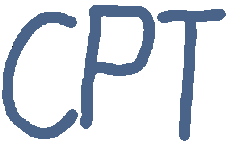
|
Calendar of Physics Talks Vienna
| Speaker: | Qianyu HAO (University of Geneva) |
| Abstract: | In this talk, I will discuss how quasinormal modes of certain black holes can be studied utilising the two-dimensional conformal field theory (2D CFT) and their connection to four-dimensional N=2 supersymmetric field theories. This serves as an example of the interesting interplay between black hole physics, 2D CFTs, and 4D N=2 theories, where insights from one domain illuminate the others. We will review the correspondences and the dictionaries. I will show how to solve the connection problem of second-order linear ODEs of Fuchsian type coming from quiver gauge theories or corresponding black hole perturbation theories in terms of the crossing symmetry of the 2d CFT. This is a generalization of the Heun case studied in Bonelli-Iossa-Lichtig-Tanzini. In particular, the connection coefficients are expressed in terms of a special function defined in 4D N=2 theories, which is the... |
| Date: | Tue, 27.05.2025 |
| Time: | 14:00 |
| Duration: | 60 min |
| Location: | Erwin-Schroedinger Lecture Hall, 1090 Vienna, Boltzmanngasse 5, 5th floor |
| Contact: | S. Fredenhagen, M. Sperling |
| A quantum sandwich world and how we can explore it with soft x-rays |
| Speaker: | Kai Rossnagel (Christian-Albrechts-Universität zu Kiel, Kiel/Deutschland) |
| Abstract: | Without materials, there is nothing. Without quantum materials, there is nothing interesting.
Quantum materials express our desire to find and explain new states of matter and new physical phenomena induced by the quantum mechanical interactions of electrons. Paradigmatic examples are quantum material sandwiches made by stacking and twisting single layers of layered materials, which currently represent one of the richest and most tunable discovery and engineering platforms in all of condensed matter physics.
To see and understand how these and other quantum materials work, we need spectroscopic tools that can provide direct snapshots of electron behavior in energy-momentum space. The most powerful toolbox for this is soft x-ray spectroscopy. And the single most powerful tool is angle-resolved photoelectron spectroscopy (ARPES), which has recently been transformed into a true in operando |
| Date: | Tue, 27.05.2025 |
| Time: | 16:00 |
| Location: | TU Wien, Institut für Angewandte Physik, E134 1040 Wien, Wiedner Hauptstraße 8-10 Yellow Tower „B“, 5th floor, SEM.R. DB gelb 05 B |
| Contact: | Prof. Dr. Wilhelm |
| QCD evolution equations at four loops |
| Speaker: | Sven Moch (University of Hamburg) |
| Abstract: | We review the status and precision of evolution equations for parton distribution functions (PDFs) in QCD.
We present ongoing efforts on extending the evolution kernels and splitting functions to four loop accuracy in the perturbative expansion.The work is based on the computation of fixed Mellin-N moments for the anomalous dimensions of off-shell flavour-singlet operator matrix elements for a general gauge group. Using these results and all available endpoint constraints, we construct approximations for the splitting functions at four loops that should be sufficient for most collider-physics applications.
For partial results such as the fermionic contributions to non-singlet splitting functions, also analytic all-N results are determined by solving systems of Diophantine equations. |
| Date: | Tue, 27.05.2025 |
| Time: | 16:15 |
| Duration: | 60 min |
| Location: | Erwin-Schroedinger Lecture Hall, 1090 Vienna, Boltzmanngasse 5, 5th floor |
| Contact: | A. Hoang, M. Procura |
|
